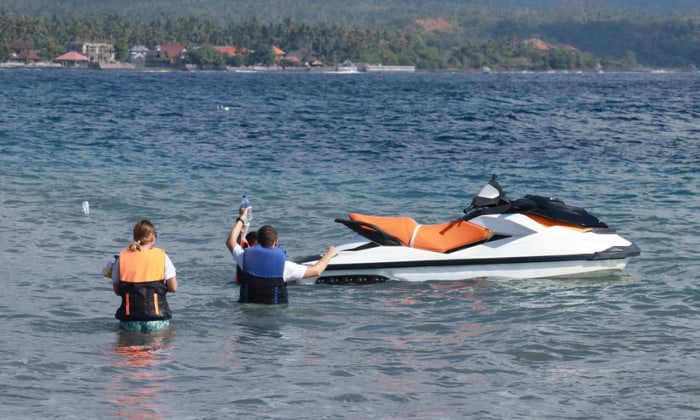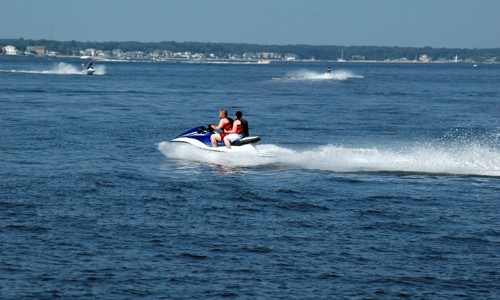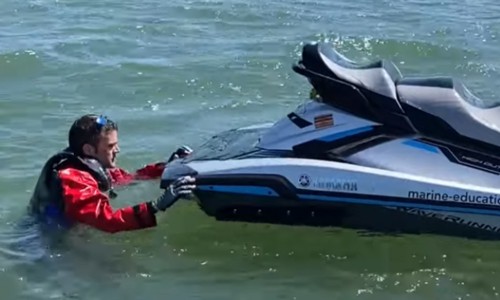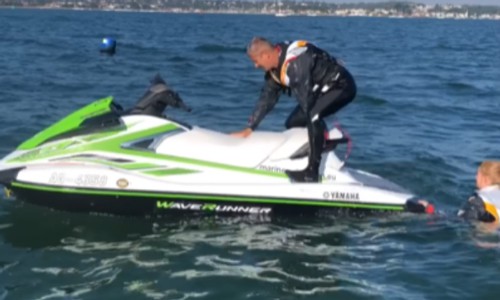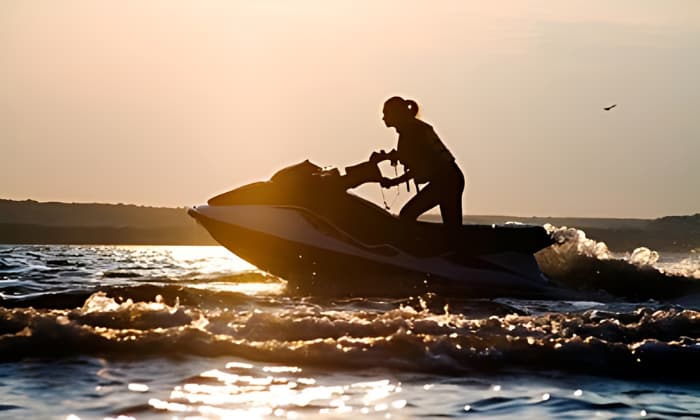Imagine this: You’re on your PWC with the waves dancing around you. One moment, you are moving swiftly, and the next, you find yourself losing steering control and plunging into the water’s cool embrace. Panic digs its claws soon enough.
So, what is the best way to reboard a PWC in the water? First and foremost, relax and swim to the boat’s rear—avoid boarding from the side. Grab a part of the seat for support. Pull yourself up to a kneeling position, then re-seat yourself.
Table of Contents
Step-By-Step Guide to Safe Reboarding
The above procedure is a more generalized technique that can apply to most people operating a PWC. However, if the specific brand of PWC that you’re using has outlined a specific procedure (like in the case of Sea-Doo), then it’s best to just follow it.
I’ll expound on the technique of reboarding a personal watercraft above and every important thing to remember.
These steps assume your PWC is still upright. Even if it does get capsized, no worries, I’ll share the best way to correct it so you can safely board. Let’s begin!
1. Stay Calm and Be Aware of Your Immediate Surroundings
Panicking doesn’t do you any good. It will only cause you to think irrationally. Furthermore, it’s fundamental seamanship to always be aware of your surroundings while onboard or when in the water.
2. Swim Toward the Stern of the PWC
After a fall and you’re now calm, the next immediate step to take is to head for the stern of the PWC. Feel free to rotate the PWC so that you’ll be facing its rear. Reboarding there is safer because it’s less likely to cause the vessel to overturn.
In some PWC models, like a Sea-Doo, there’s a dedicated handle at the seat’s back portion designed for doing this. There’s also a boarding step that aids you in getting a stable footing.
In case the PWC boat capsizes, you’ll need to take these extra steps, assuming you’ve attached the PWC’s ECOS before going out (because it’s standard Safe Operating Procedures).
- Locate the decal at the vessel’s rear that informs which way you should rotate the boat.
- Rotate the boat according to the vessel indicated on the decal.
3. Pull Yourself Up on Your Knees
Grab onto a stable part of the PWC that you can easily get a solid grip on, then heave yourself up onto the platform and assume a kneeling position. This will help you gain your balance faster when boarding most boats, and PWCs are no different.
If, on the off chance, you find yourself struggling to board from the rear, boarding from the sides of the PWC is another option, but not really recommended due to the stability issues. Just grab onto the sides, pull yourself up, then swing your leg over to sit down.
Here’s a brief demo of the entire procedure, if you’re interested:
When is It Difficult to Reboard a PWC
Based on the guide above, attempting to re-board may seem fairly smooth and easy.
However, even experienced boaters may struggle to get back on their PWC if they find themselves in any of these scenarios, so never underestimate the possibility of it happening to you as well.
- You can’t get a solid grip on the PWC.
- The water is rough, which causes instability.
- You set out feeling tired from the get-go. You may find yourself becoming exhausted much faster as you attempt to reboard your PWC.
To increase your chances of success, follow these tips:
- Practice reboarding PWCs beforehand with a skilled person until you’re confident in your ability.
- Always wear USCG-approved personal flotation devices.
- Take your time to get a solid grip and make sure your movements are correct. Rushing can result in injuries and faster exhaustion.
Conclusion
The correct answer to “What is the best way to reboard a PWC in the water?” will always be to do it in the stern of the vessel.
Just follow the reboarding techniques and tips above and remember the risks so you won’t find yourself in a situation that’s trickier than it should be.

“My intention from the first day establishing Boating Basics Online is to provide as much help as possible for boaters who want to experience a first safe and convenient trip. So feel free to join us and share your beautiful journeys to the sea!”


